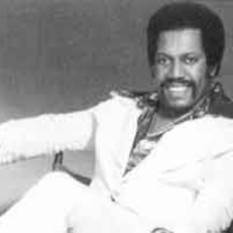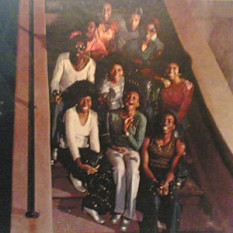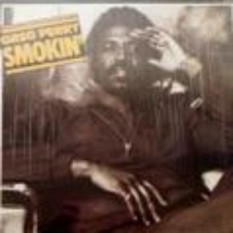Sunday, May 17, 2009
--------------------------------------------------------------------------------
LOST SOUL
The Next Teen Heart-Throb
In April 1969, record industry organs scrambled to find enough superlatives for a new single, "Let's Play House," released on the New York City-based Musicor label. Billboard shown its Special Merit Spotlight on the platter, trumpeting it as a "strong vocal workout on an equally strong and driving blues ballad that should make quite a dent in both the pop and R&B charts." Cashbox raved that the "sparkling ballad opens strong and maintains the narrative impact all the way through." Four stars were awarded by Record World, which went on to note that the vocalist "sings his heart out on this winning ballad like the teen heart throb he could easily become."
How could the crystal balls of all three publications have been so off the mark, without Billboard‘s prophecy of a "dent" in the charts even causing a ripple? Why is it that, more than thirty years later, R&B aficionados around the world have come to recognize "Let's Play House" as the classic it has deservedly become? What prevented all those teenage hearts from throbbing at the mere sound of the name Tony Drake?
"I really don‘t feel too bad because the record company wasn't equipped for such a success," noted an introspective Drake in a recent interview. "They just didn‘t know what to do with the record." Despite a champion in disc jockey Eddie O'Jay and some promising bursts of radio play in the South, "Let's Play House" quietly disappeared from the charts, never having neared its forecast summit, and causing Tony Drake to ask for a release from Musicor.
The next year found Drake in Chicago making a fresh start. While under a new contract with Brunswick Records, Drake acquired a mentor and best friend in the legendary Jackie Wilson. A single was cut, a Eugene Record/Barbara Acklin tune entitled "Suddenly" and Van McCoy's "It Hurts Me More" on the flip side, with the Chi-Lites providing back-up. With such expert assistance and the presence and moral support of Wilson, the recording session ended far ahead of schedule. A generous Drake gave the nod to Brunswick promotion man Gus Redman when asked if the extra time could be used to play around with a newly-signed, young group called The Lost Generation. Their resulting single, "The Sly, the Slick and the Wicked". became and instant hit, lingering for thirteen weeks on Billboard‘s soul chart. With the record company narrowly focusing on its newfound priority, Brunswick's other artists, including Drake and The Chi-Lites, suffered from a total lack of support and promotion. Despite some airplay of both sides, Tony Drake's second single went away almost as suddenly as The Lost Generation appeared.
The Chameleon
Young Samuel Garner wanted nothing more than to be a singer. Born in 1945 in Philadelphia and raised in a small Virginia town by his great-grandmother, the boy quickly became devoted to the radio, developing a talent along the way for imitating the exact styles of his favorite performers from Frank Sinatra to Frankie Lymon. Drake reminisces, "All my dreams were that, one day, I'd grow up and move to the city and become a singer."
At the age of fifteen, Garner moved to Philadelphia and in pursuit of his dream, found himself playing valet to The Cruisers. Soon, he was rubbing elbows with the likes of Ben E. King, Terry Johnson and Tommy Hunt of The Flamingos. Ever determined to have a career as a solo performer, Garner eventually made his way to New York, where his name was changed to Tony Drake by manager Bunny Jones (who once got her protégé a $10,000-a-week deal in Las Vegas, only to be canceled when Drake was taken in for a meeting; a befuddled William Morris agent was confounded to find himself facing a black man after presuming Tony white, having been hyped as "a Tom Jones type" by Bunny Jones).
In retrospect, Drake speculates that his early penchant for mimicry may have played a factor in his lack of recognition as a successful solo vocalist. "When I first heard 'Let's Play House,' the song reminded me of Jerry Butler, so I sang it like Jerry Butler. When I sang 'Human', I'd sound like Tommy Hunt because I'd be thinking of Tommy Hunt. Sometimes I'd hear myself sounding like Chuck Jackson. I developed a multi-sound of voices until my own could not be identified. When I recorded 'Let's Play House,' I could have done it in one of fifty voices. Over the years, I‘ve curbed this and now I don‘t think I sound very much like anyone else. Now I sound like Tony Drake."
The Great Pretender
Association with The Flamingos would continue to haunt Drake as he became a backstage habitué at Philadelphia’s Uptown Theatre (the result of a friendship with the doorman). Initially attracted by the glamorous image flaunted by the group’s Terry Johnson, Drake would soon meet and be overwhelmed by the presence of lead singer Tommy Hunt, going so far as to pass himself off as Tony Hunt, Tommy's younger brother, until he was rechristened by Bunny Jones. "He was the most unbelievable entertainer I’ve ever seen in a group", Drake recalled. "I've never seen anyone who could match Tommy Hunt".
When Hunt left the group, Tony prepared to audition as his idol's replacement. The chameleon was so determined to emulate Hunt that he even shopped for a new suit and shoes similar to those worn by The Flamingos. But as the audition progressed, one thing became obvious to everyone in the room, perhaps most painfully to Tony: the teenager could not sing. Looking back on the occasion, Drake reveals, "I had never had any experience, not even as a kid, not in church, or anywhere. I was so mesmerized with the fantasy of being a singer that I just pretended I was a singer. I was so embarrassed that I actually cried."
But Terry Johnson caught a glimmer of something in the boy and began working with him, teaching him how to sing. Eventually, with the departure of another group member, Tony's fiction became fact. At the age of eighteen, he became a bona fide member of The Modern Flamingos.
The Peacock
"Clothes make the man", as the saying goes, but could they have helped unmake Tony Drake’s career? Next to singing and women, Tony loved clothes. Not just any clothes, mind you, but the best his salary could afford, with all the proper matching accessories, from shoes to jewelry to hats.
Even though Brunswick continued to neglect Drake's career in the two years he was signed to the label, his friendship with Jackie Wilson did bring the fringe benefit of an expense account, enabling him to at least look the part of star entertainer. But Tony's taste in ostentatious clothing -- thousand dollar satin tuxedos accented by a diamond wristwatch -- only served to alienate people in the industry. Remember, too, this was the 1970s, the dawn of the disco era and the time of Superfly and Shaft, a time in fashion when the old axiom "less is more" was audaciously ignored. "They wanted to say I was a pimp, but they knew I wasn’t connected with drugs or any other illegal activity because I was too well groomed," Drake recollects.
Being an official Brunswick Recording Artist did little to pay the rent or sate Drake’s fashion habit, so he took a job with a clothing manufacturer. With the job came discounts, and Tony's burgeoning wardrobe enabled him to hide the fact that he was working as anything other than as a singer. But when prospective recording or performing gigs arose, clients were frequently puzzled or downright put off by Tony’s splashy sartorial style. Looking too much like a finished product and too set in his ways, Drake muses, "It was almost like there was nothing left to be done with me, by a record company or anyone else."
With both Musicor and Brunswick promising the world and delivering nothing, and no prospects in sight for a new recording deal (he would not have another single released until 1982), Tony began to set his sites elsewhere, as a stage performer and session singer. More important, he began to write songs.
The Other Man
In 1971, Drake was in the frequently frustrating position of loving a woman who had a young daughter fathered by another man. His situation drove him to do something he had never done before: he wrote a song. Never one for burning bridges, he stayed in touch with his music industry buddies, especially the members of the Chi-Lites. When Eugene Record heard Tony’s first song, "Living in the Footsteps of Another Man," he declared that it would be the perfect tune to take back to Brunswick for Barbara Acklin to record, with just a few changes in gender. But then the call came from Chicago announcing that the song would be recorded by The Chi-Lites on their gold album "A Lonely Man".
"Living in the Footsteps of Another Man" would eventually be recorded several dozen times (as well as its alternate version for "Another Girl"), including performances by The Pasadena's (on their platinum album "To Whom It May Concern") and Delroy Wilson, in Caribbean and Reggae adaptations, even translated into Italian. Publishing rights were sold to Chappell Music, guaranteeing the first-time songwriter an income which allowed him the luxury of saying "No."
This luxury would be invoked when Motown offered him a deal, but found his chosen material "unsuitable" and demanded that he drop his closest colleagues, essentially ending his fledgling collaboration with keyboard player Jimmy Smith. "I wanted to make my own way through life, and when you’re that independent, you alienate the companies", Drake observed. "I could have been signed, but I wanted my own team, and it was too early for that. I wanted to do what Russell Simmons would eventually do with Def Jam."
Throughout the 1970s, Drake and Smith made a number of independently-produced recordings financed by a group of New York City businessmen, but the tapes remained in their boxes (many of them are released here for the first time). In 1982, a deal was struck with tiny Rissa-Chrissa Records, and a single, "Human" backed with "Think About It", was released. In the mad scramble that characterized the recording industry in the post-disco era, small labels dropped like flies, and Rissa-Chrissa simply disappeared, taking with it yet another opportunity for the public’s long-overdue discovery of Tony Drake.
The Myth and The Man
In 1984, a young East Coast promoter and DJ named Mike Boone picked up a compilation LP called "Soul of a Man" and was soon finding every chance to play his favorite track, "Let’s Play House." A tape of the song eventually found its way to Felix Hernandez, host of the popular "Rhythm Review" radio show and, years after its initial release, "Let's Play House" no longer needed promotion: it was now recognized as an instant classic.
Outside the US, copies of the original Musicor single were going for as much as $100, and collectors were disappointed when their investments were devaluated when Drake’s tunes began to appear on CD compilations (including hot-sellers from the UK entitled "We're A Lover" and "New York Soul Serenade," both of which prominently feature the singer's name on their covers). New popularity was found in Caribbean communities. The story of the Brunswick years would be documented in a book in which Drake takes his place along side Louis Armstrong, Little Richard, and Lionel Hampton, and in a Jackie Wilson biography by Tony Douglas published in Australia. The November 2000 issue of the British music magazine "In the Basement" would devote a full six pages to Drake’s story. An overwhelmed shop owner on White Plains Road in the Bronx who spotted the balladeer in his store one day exclaimed, "Oh my God! You're Tony Drake!" When he asked his customers if they knew who this man was, about twenty people laughed and said, "Everybody knows 'Let's Play House!'"
At the eleventh anniversary party for "Rhythm Review" held at New York's landmark Roseland in 1994, Drake was persuaded to lip-synch "Let’s Play House" and 3,300 people were hypnotized by his debonair and dominating stage persona. More fans were converted, word of mouth spread, and Tony was no longer pigeonholed: his music had finally transcended the categories of Soul and R&B and was recognized for its universal language. He continues to wow the crowds that jam his well-publicized concert appearances (frequently with hundreds lining up for autographed photos), and is finally greeted with the credibility and respect it took thirty years to achieve when he takes calls from adoring listeners from around the world on radio shows.
Today, he absolutely glows at the mention of his nine year-old son. "He sings and dances, and he’s every bit as talented as Michael Jackson", raves the proud father of Drake Anthony Garner. Looking deep within, Tony recently told me, "I wanted to show people the glamorous side of show business, but that wasn't accepted. My image had to be fought for, "Now that the battle has been won, he likes to think of the music on this CD as "my treasure, to finally be shared with everyone."
Perhaps this Cinderella story is best summed up by the spontaneous reaction from a radio announcer, startled to find "the world’s greatest singer" on the other end of his phone connection: "Tony, you have touched our lives with your music, your beauty as a person, as a spirit. We love you."
Larry L. Lash
October 2001
New York City
| Top |
--------------------------------------------------------------------------------
[Home] [Living in the Footsteps] [Tony's Music] [Tony's Photo Gallery]
© 2002 -2008 All Rights Reserved PJzWebDesignz.com
.
All albums
You can find information through the best music search engine - Muzlan.top 😊All materials on request "Tony Drake" are available on page Tony Drake
Yes of course. You can listen tracks on the page Tony Drake
Yes of course. You can download tracks on the page Tony Drake
This page is found by queries: Tony Drake all mp3, Tony Drake song download, Tony Drake remix, Tony Drake mp3 download, Tony Drake songs download



